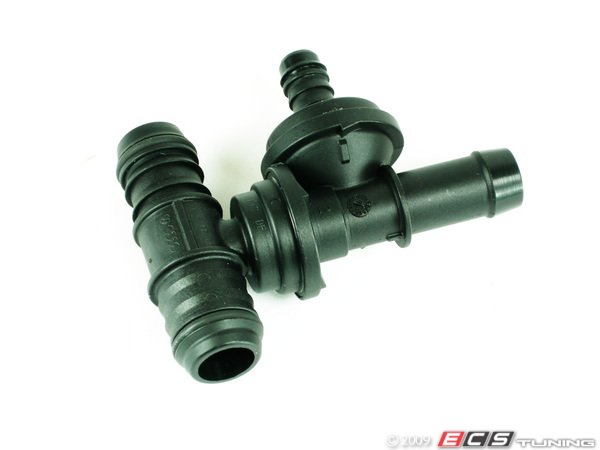
Originally Posted by
old guy

Not necessarily true. The PRV is in a normally open condition. As vacuum increases the diaphragm in the PRV pulls down on the intake tube and the only purge air enters through the small metering hole on the side of the tube. The metering hole on the PRV tube pretty much matches the metered air being pulled through the PCV valve.
If the PCV metering valve is defective and pulls an excessive amount of vacuum the PRV can't provide that amount of flow and consequently the block receives an excessive amount of vacuum. That's pretty much the condition that the early 034 billet PCV valves caused and consequently they were causing an additive code at idle. Once 034 scaled back a little on the metering the code complaints went away.
If the PCV is blocked/plugged, I cannot see any way for the crankcase to be exposed to excessive vacuum pressure, since there is insufficient flow of blow-by gasses from the crankcase. With no or low blow-by flow out of the crankcase, there is nothing to create excessive vacuum in the crankcase. I can't think of any situation where excess vacuum exists in the crankcase unless the fresh make up air flow is blocked, with blow-by flowing out of the crankcase into the intake manifold through the PCV. If the fresh air make up flow is blocked, the crankcase pressure regulator cannot control fresh make up air flow into the crankcase, regardless of the position of the diaphragm in the crankcase pressure regulator valve. If the ventilation plumbing is blocked at one location, it is most likely flow restricted everywhere due to deposit accumulation, including fouling the crankcase pressure regulator valve.
Consequently, the entire crankcase ventilation plumbing must be cleaned out, and the crankcase pressure regulator valve and PCV replaced.













 Reply With Quote
Reply With Quote






Bookmarks